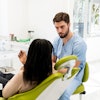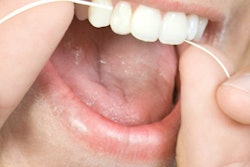
There has been some talk about adding a dental benefit to Medicare, but it may be more feasible to add comprehensive dental care to state Medicaid programs instead, according to an analysis published in the July edition of the Journal of the American Dental Association.
While policymakers have numerous hurdles to overcome if they want to add dental benefits to Medicare, some states already offer low-income older adults comprehensive dental benefits through Medicaid. The new analysis showed that states with comprehensive Medicaid dental benefits increased dental visits for eligible seniors -- a solution that could be an easier and less costly alternative to adding dental benefits to Medicare.
 Dr. Astha Singhal, PhD.
Dr. Astha Singhal, PhD."Although a Medicare dental benefit would possibly improve access to dental care for all older adults, our results indicate that mandating adult dental benefits under Medicaid could improve access and oral health outcomes for those most in need, the poorest older adults," wrote the authors, led by Dr. Astha Singhal, PhD, an assistant professor at the Boston University Henry M. Goldman School of Dental Medicine (JADA, July 2021, Vol. 152:7, pp. 551-559).
The U.S. is undergoing a massive population shift, with the number of adults older than 65 set to outnumber the number of children in the next decade. But dental health policy has not kept pace with this change.
"Preparing for the demographic shift under way requires a realignment of public health programs and policy priorities," the authors wrote. "This is especially true with regard to oral health, in which we have made strides in children's access and oral health outcomes but have largely neglected adults and older adults."
In response to this demographic shift, some politicians have called for adding dental benefits to Medicare. However, few -- if any -- studies have examined the potential effects of Medicare expansion through the lens of existing Medicaid dental benefits for older adults.
In the new analysis, the authors used data from the 2014, 2016, and 2018 Behavioral Risk Factor Surveillance System (BRFSS), a nationally representative, state-level survey that asks about health behaviors. The authors focused on the roughly 107 million adults ages 65 and older who completed the survey. They further defined low-income older adults as those with an annual household income of less than $15,000 -- a threshold that captures most older adults eligible for full Medicaid benefits.
The lower a respondent's annual income, the less likely that respondent was to see the dentist at least once per year. Only 40% of low-income older adults saw the dentist in the past year, compared with 70% of adults with higher incomes.
Household income was also tied to the rate of missing teeth. A total of 82% of low-income older adults were missing at least one permanent tooth, compared with 70% of wealthier adults. Additionally, 29% of low-income older adults were missing all their teeth, compared with 12% of wealthier adults.
Further analysis revealed that Medicaid dental benefits affected the rate of dental visits for these low-income seniors. After adjusting for confounding factors, residents of states with no dental Medicaid benefits were 17% less likely to have a dental visit than residents of states with comprehensive dental benefits.
However, the type of Medicaid coverage had no significant effect on whether or not older adults were missing teeth or edentulous. This result was "not entirely unexpected" because tooth loss results from longer-term complications and lack of dental care, the authors wrote.
"It is a longer-term outcome that was not found to be linked with the concurrent dental benefits coverage, except between the extreme categories of dental benefits," they wrote.
The study had some limitations, including relying on self-reported survey data. The survey also did not ask about untreated dental caries, pain, or unmet dental needs, which may have served as a better current oral health indicator than tooth loss.
Despite the shortcomings, the results suggest that comprehensive Medicaid dental benefits can get more seniors into the dental office. It could be just one solution to help more older adults access dental care, the authors noted.
"Our study indicates that state Medicaid dental benefits for adults may have an effect on dental care use by low-income older adults," they concluded. "As the U.S. population ages, we need to examine and realign public health policies and programs to meet their needs."



















